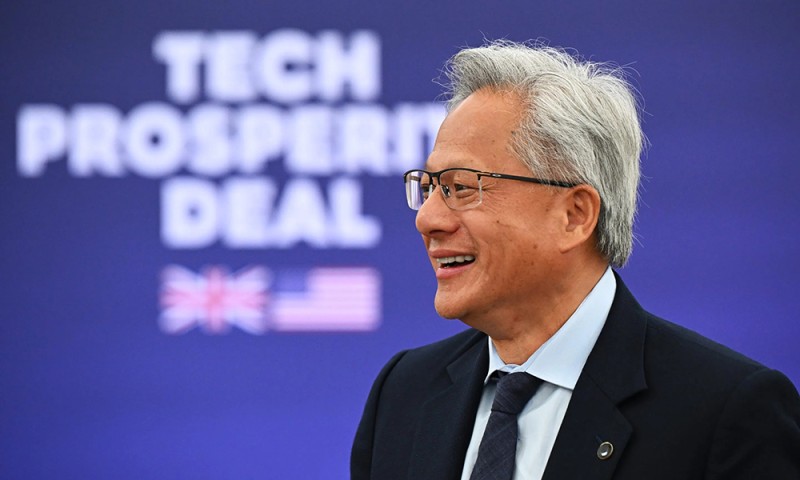
英伟达(Nvidia )正在筹备人工智能史上最大手笔的投资计划。该公司承诺向ChatGPT的开发者OpenAI投资高达1,000亿美元。此前,英伟达承诺向曾经的竞争对手和前美国半导体领军企业英特尔(Intel)投资50亿美元。
两家公司联合宣布已签署战略合作意向书,计划为OpenAI的下一代人工智能基础设施部署至少10吉瓦英伟达系统,用于训练和运行新一代模型。该公告称,英伟达的投资将直接用于建设数据中心和电力容量。
英伟达的投资将分阶段推进,并与OpenAI部署每吉瓦新AI基础设施的进度挂钩。首个吉瓦级基础设施预计将在2026年下半年上线,届时将采用英伟达的Vera Rubin平台。该系统旨在满足OpenAI即将推出的模型所面临的极其庞大的计算需求,这些模型以发展通用人工智能为目标。
OpenAI联合创始人兼总裁格雷格·布罗克曼表示:“自OpenAI成立初期,我们就与英伟达保持着密切合作。” 他指出,OpenAI利用其平台创建的AI系统,如今已吸引数亿用户每日与ChatGPT进行交互。“我们很高兴与英伟达共同部署10吉瓦算力,以此拓展智能技术边界,并使这项技术普惠全人类。”
战略目标与路线图
根据协议,OpenAI将指定英伟达作为其AI工厂扩张的首选战略计算与网络合作伙伴。双方承诺将"协同优化"硬件与软件开发路线图,使OpenAI的模型与基础设施软件创新直接对接英伟达的下一代GPU及网络产品。
此项投资并非孤立举措,而是建立在更广泛的AI产业合作网络基础之上,包括与微软(Microsoft)、甲骨文(Oracle)、软银(SoftBank)及Stargate合作伙伴的持续合作,这些合作均聚焦于构建全球最先进的AI基础设施。OpenAI增长迅速,据其披露目前周活跃用户已突破7亿,这反映出从消费者到全球企业和开发者,对于对他们至关重要的先进计算资源的需求日益飙升。(*)
《财富》杂志使用生成式AI辅助完成本文的初稿。编辑在发表前已核实信息的准确性。
译者:刘进龙
审校:汪皓
英伟达(Nvidia )正在筹备人工智能史上最大手笔的投资计划。该公司承诺向ChatGPT的开发者OpenAI投资高达1,000亿美元。此前,英伟达承诺向曾经的竞争对手和前美国半导体领军企业英特尔(Intel)投资50亿美元。
两家公司联合宣布已签署战略合作意向书,计划为OpenAI的下一代人工智能基础设施部署至少10吉瓦英伟达系统,用于训练和运行新一代模型。该公告称,英伟达的投资将直接用于建设数据中心和电力容量。
英伟达的投资将分阶段推进,并与OpenAI部署每吉瓦新AI基础设施的进度挂钩。首个吉瓦级基础设施预计将在2026年下半年上线,届时将采用英伟达的Vera Rubin平台。该系统旨在满足OpenAI即将推出的模型所面临的极其庞大的计算需求,这些模型以发展通用人工智能为目标。
OpenAI联合创始人兼总裁格雷格·布罗克曼表示:“自OpenAI成立初期,我们就与英伟达保持着密切合作。” 他指出,OpenAI利用其平台创建的AI系统,如今已吸引数亿用户每日与ChatGPT进行交互。“我们很高兴与英伟达共同部署10吉瓦算力,以此拓展智能技术边界,并使这项技术普惠全人类。”
战略目标与路线图
根据协议,OpenAI将指定英伟达作为其AI工厂扩张的首选战略计算与网络合作伙伴。双方承诺将"协同优化"硬件与软件开发路线图,使OpenAI的模型与基础设施软件创新直接对接英伟达的下一代GPU及网络产品。
此项投资并非孤立举措,而是建立在更广泛的AI产业合作网络基础之上,包括与微软(Microsoft)、甲骨文(Oracle)、软银(SoftBank)及Stargate合作伙伴的持续合作,这些合作均聚焦于构建全球最先进的AI基础设施。OpenAI增长迅速,据其披露目前周活跃用户已突破7亿,这反映出从消费者到全球企业和开发者,对于对他们至关重要的先进计算资源的需求日益飙升。(*)
《财富》杂志使用生成式AI辅助完成本文的初稿。编辑在发表前已核实信息的准确性。
译者:刘进龙
审校:汪皓
Nvidia is preparing one of the largest investments in the history of artificial intelligence, pledging up to $100 billion in funding for OpenAI, the creator of ChatGPT. The deal comes hot on the heels of Nvidia pledging a $5 billion investment into Intel, its one-time rival and former American semiconductor champion.
The companies jointly announced they had signed a letter of intent for a strategic partnership to deploy at least 10 gigawatts of NVIDIA systems for OpenAI’s next-generation AI infrastructure to train and run its next generation of models. Nvidia’s investment will go directly toward building data center and power capacity, the announcement said.
Nvidia’s investment will be progressive and tied to OpenAI’s deployment of each gigawatt of new AI infrastructure, with the first gigawatt scheduled to come online in the second half of 2026 using Nvidia’s Vera Rubin platform. This rollout aims to address the extraordinary computing demands of OpenAI’s forthcoming models, which target advances toward artificial general intelligence.
“We’ve been working closely with NVIDIA since the early days of OpenAI,” said Greg Brockman, cofounder and president of OpenAI, nothing OpenAI had utilized its platform to create AI systems that hundreds of millions of people are now using on a daily basis as they interact with ChatGPT. “We’re excited to deploy 10 gigawatts of compute with NVIDIA to push back the frontier of intelligence and scale the benefits of this technology to everyone.”
Strategic aims and roadmap
Under the agreement, OpenAI will designate Nvidia as its preferred strategic compute and networking partner for its AI factory expansion. Both companies have committed to “co-optimizing” hardware and software development roadmaps, aligning OpenAI’s model and infrastructure software innovations directly with Nvidia’s next-generation GPU and networking products.
The investment does not stand alone; it builds on a broader network of AI industry collaborations, including ongoing alliances with Microsoft, Oracle, SoftBank, and Stargate partners, all focused on constructing the world’s most advanced AI infrastructure. OpenAI’s rapid growth—now more than 700 million weekly active users, according to the company—reflects surging demand not just from consumers but also enterprises and developers worldwide, for whom advanced computing resources are critical.
For this story, Fortune used generative AI to help with an initial draft. An editor verified the accuracy of the information before publishing.

